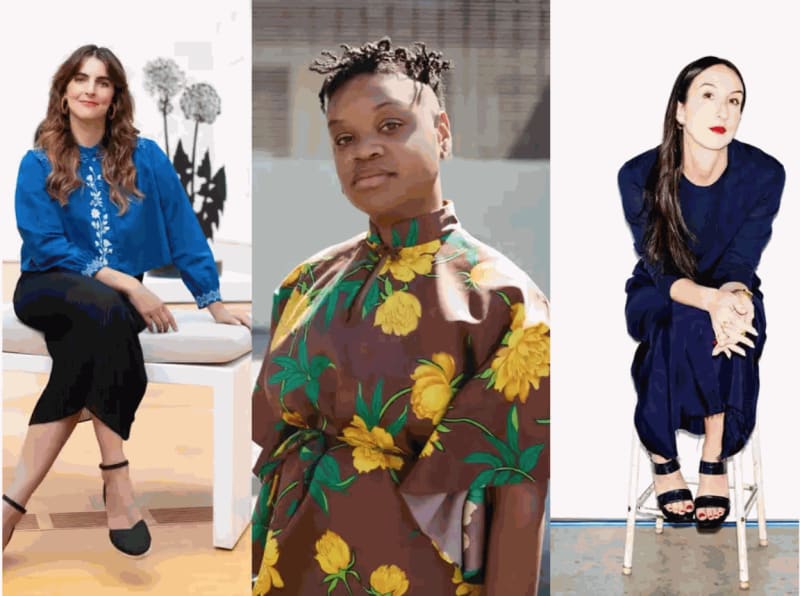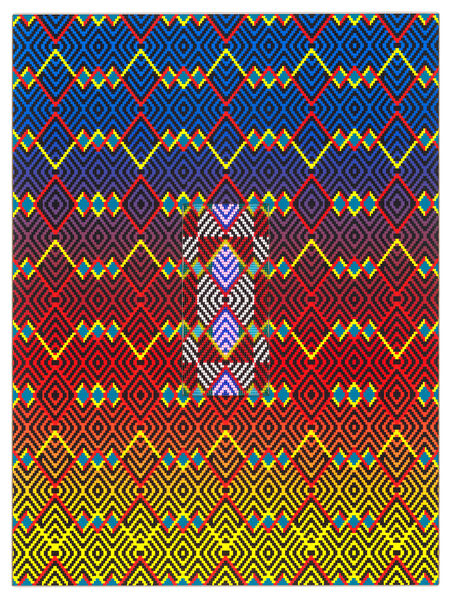

At the beginning of 2023, curators predicted technology would be a major influence on the art world. Indeed, likely due to the growth of ChatGPT, advances in AI technology were a hot topic, with artists increasingly experimenting with artificial intelligence and other digital tools in their work. It was also a “reset year,” as curator Larry Ossei-Mensah noted: “an opportunity to reevaluate the direction of…practices.”
As 2024 kicks off, Artsy spoke with 15 leading curators to get their take on what to expect. Several suggested that the art world will feel the impact of the current sociopolitical climate internationally—especially as global conflicts continue and the U.S. enters its 2024 election cycle. Curators Folakunle Oshun and Ed Schad predicted that the backdrop of violence and divisiveness worldwide would generate politically urgent art.
Meanwhile, most curators noted a growing emphasis on environmental and social justice, particularly as seen through the eyes of female and Indigenous artists, who are often at the center of these critical discussions. This demographic shift reflects a broader interest in artworks that engage with contemporary global challenges, and take a bold, activist approach.
Amy Smith-Stewart
Chief Curator, The Aldrich Contemporary Art Museum
Ridgefield, Connecticut
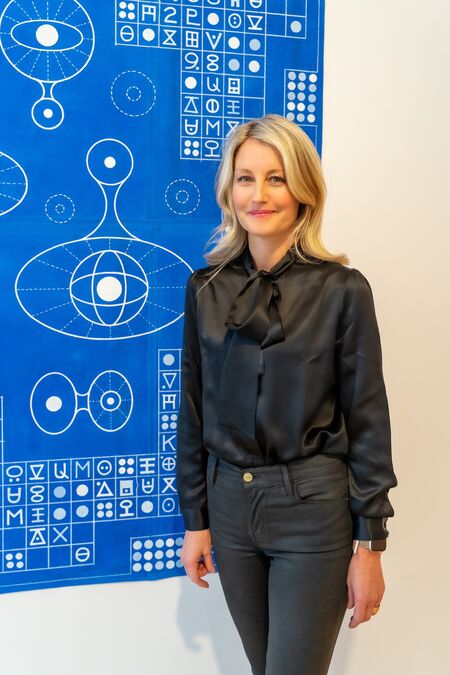
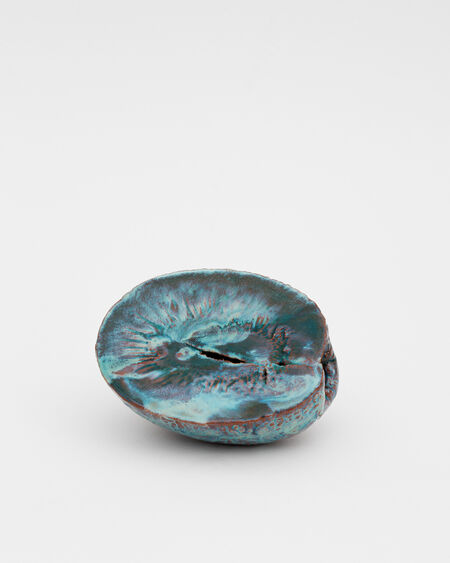
“I predict we will see more artists incorporating organic materials or materials collected, grown, and harvested from the natural world into their work,” Amy Smith-Stewart said, “to comment and address legacies of colonization, ancestry, and cultural erasure, as well as issues of environmental justice and land use, and more generally work that explores the tenuous relationship we face on a dying planet, with exemplary works by artists such as Delcy Morelos, Mary Manning, Rachelle Dang, Athena LaTocha, Kiyan Williams, Precious Okoyomon, Edgar Calel, Larissa Rogers, Ali Cherri, Umico Niwa, Bronwyn Katz, and Carl Cheng.
“Materials and methods carry meaning, and artists working in the diaspora are choosing materials that carry biographical and geopolitical resonances specific to their homelands and heritages,” she added, nodding to artists including Hangama Amiri, Suchitra Mattai, Hana Yilma Godine, ektor garcia, Nickola Pottinger, Tania Candiani, Sanaa Gatejia, Georgina Trevino, Melissa Joseph, Marie Watt, Sagarika Sundaram, Jean Shin, Teresa Baker, Tau Lewis, and Aya Rodriguez-Izumi.
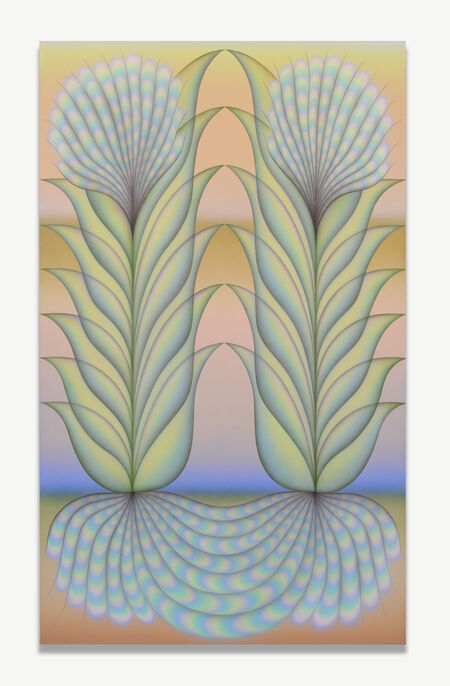

Other areas she sees growing interest for 2024 include artists “pushing the scale of ceramic sculpture” like Simone Leigh, Raven Halfmoon, Cathy Lu, Ruby Neri, Julia Haft-Candell, Rose B. Simpson, and Genesis Belanger; and mystical and spiritualist abstraction from female artists such as Molly Greene, Yevgeniya Baras, Hilma’s Ghost, Julia Kunin, Minako Iwamura, Joani Tremblay, Uman, and Mimi Lauter, among others.
She also predicts glass will become “as ubiquitous as ceramics,” pointing to artists using the medium including Dyani White Hawk, Esther Ruiz, Chiffon Thomas, Layo Bright, Ragen Moss, and Hannah Levy, among others.
Marina Isgro
Curator of New Media and Performance Art, Hirshhorn Museum and Sculpture Garden
Washington, D.C.
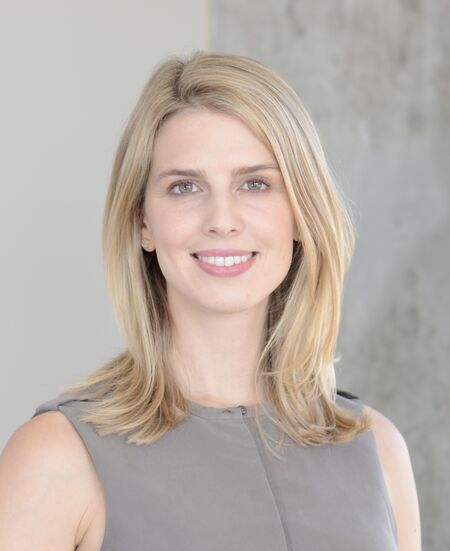
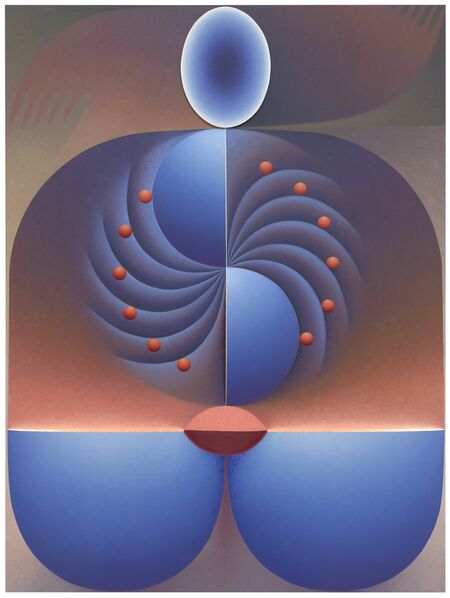
“In 2024, we’ll continue to see museums reimagining how to present their collections in fresh ways,” Marina Isgro said. “These could include inviting artists to respond to collections, incorporating community-created content into labels and audio guides, or highlighting conservation projects.” Instead of traditional chronological or geographical groupings, Isgro suggested that museums will continue experimenting with unconventional installation approaches.
She gave the example of the Barkley L. Hendricks show at The Frick, which placed Hendricks’s paintings alongside older European works from The Frick’s collection. Isgro noted similar cross-historical approaches at the Harvard Art Museums and the Seattle Art Museum’s American wing. The Hirshhorn Museum is set to adopt this approach in its upcoming 50th-anniversary show, “Revolutions: Art from the Hirshhorn Collection, 1860–1960.”
“In one gallery, we’ll install an 1884 portrait by John Singer Sargent alongside a recently acquired painting by Amoako Boafo, to look at the way portraiture has changed in the past century,” Isgro explained, “in another, we’ll pair collection works by Georgia O’Keeffe and Loie Hollowell, to show how the organic abstraction established by the American modernists continues to inspire young artists.”
Folakunle Oshun
Director, Lagos Biennial
Lagos, Nigeria
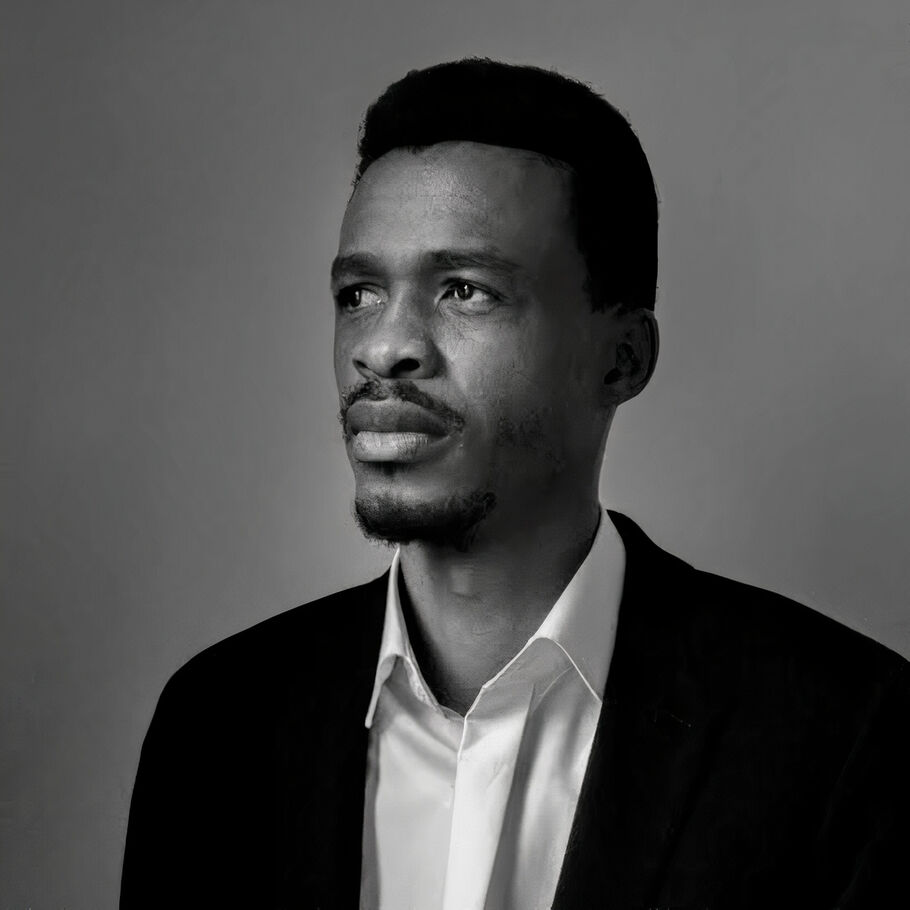
Portrait of Folakunle Oshun. Courtesy of Folakunle Oshun.
“I’m looking out for off-the-radar old-timer artists who have dug their heels outside the commercial art spaces for a while,” said Folakunle Oshun. “That’s where the real magic happens. Those are the artists and art [that] posterity will remember, not the perfectly framed three-edition series photograph you’re confident you saw at the last fair and will most likely see at the next.”
Oshun anticipates a shift in focus towards artists who can capture and respond to the contemporary world’s complexities: “There is just too much going on in the world politically to be concerned about who is using pebbles to create landscapes instead of pastels,” Oshun said. “The real question is: What is being said with the art?”
Erin Christovale
Curator, Hammer Museum
Los Angeles

Erin Christovale expressed enthusiasm for “the rise in the visibility of Indigenous artists.” She added, “I’m looking forward to more specificity and scholarship on the traditions, politics, and practices of such a wide-ranging group of artists.”
Looking ahead to 2024, Christovale noted that she is “craving bold and experimental practices and shows around sexuality and erotica.”
Stefanie Hessler
Director, Swiss Institute
New York
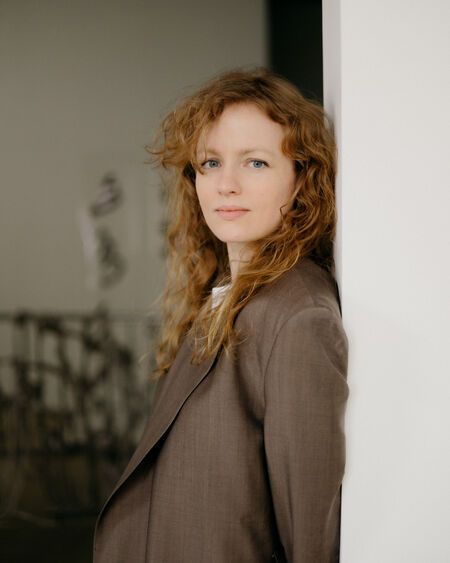
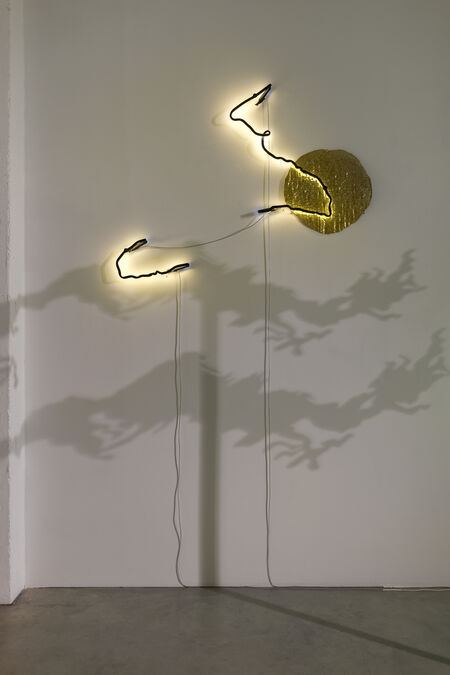
“In 2024, I believe, and hope, we will see a further deepening of our understandings of the intersections between social and environmental justice as well as technological developments, including their extractive shortcomings and generative potentials,” said Stefanie Hessler. “From climate change to AI, sovereignty to migration, I believe we will see more artists exploring forms of world-making responding to our various intersected social and environmental crises.”
She also expressed hope for institutions to place a greater emphasis on sustainability, and to address “environmental and social concerns together, connecting with local community as much as with planetary concerns.” Hessler also noted that “The close dialogue between art and critical theory, environmental humanities, gender, race, and disability studies, is going to become ever more influential.”
In 2024, Hessler is looking forward to Joan Jonas’s solo exhibition at MoMA, Lap-See Lam’s project at the Nordic pavilion at the Venice Biennale, and Taloi Havini’s exhibition at Ocean Space, also in Venice; along with “Energies,” a show about a little-known history of renewables energy she has curated at the Swiss Institute. She is also excited about Dak’Art 2024 and the Lagos Biennial, along with several African artist-initiated programs, such as Ibrahim Mahama’s Savannah Centre for Contemporary Art in Tamale, and El Anatsui’s Meridian Creative Centre in Tema (both in Ghana).
Ed Schad
Curator and Publications Manager, The Broad
Los Angeles
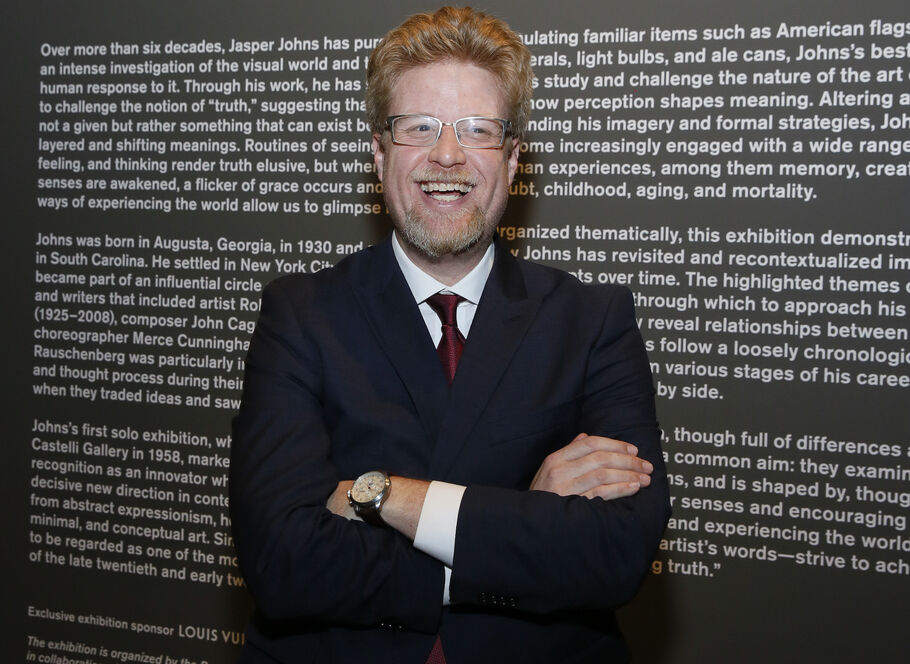
“I hope that institutions find further ways to collaborate to develop sustainable ways of creating exhibitions,” said Ed Schad. “Shipping, crating, and the production of elaborate but sadly disposable design features for the generation of large-scale exhibitions has created an ethic of waste and excess that the climate simply cannot afford.” Looking ahead, he believes that local collaboration within art communities can help minimize wasteful practices, and predicts that current conversations about sustainability will only become more urgent in the coming year.
“In terms of artmaking itself, 2024 finds the United States going into a fraught and divisive election year, and the turmoil and pain across the world produced by climate change, war, and injustice is only increasing in severity and crisis,” he noted. “Simply put: art will have political urgency this year whether artists make politics their stated intention or not, whether they manifest politics through slogans, personal activism, or the celebration of values that run contrary to destruction and ruin.
“I would like to think that this urgency will manifest itself as a further hunger for currently unheard or unrecognized voices (as we have been seeing over the last decade),” he continued, “as well as for artists who celebrate the humble, the weird, the strange, and any other subject of art that resists power or any other tired and harmful mechanism that makes life boring, harmful, and empty.”
Dr. Raphael Gygax
Independent Curator; Curator, ART onTHE MART
Chicago
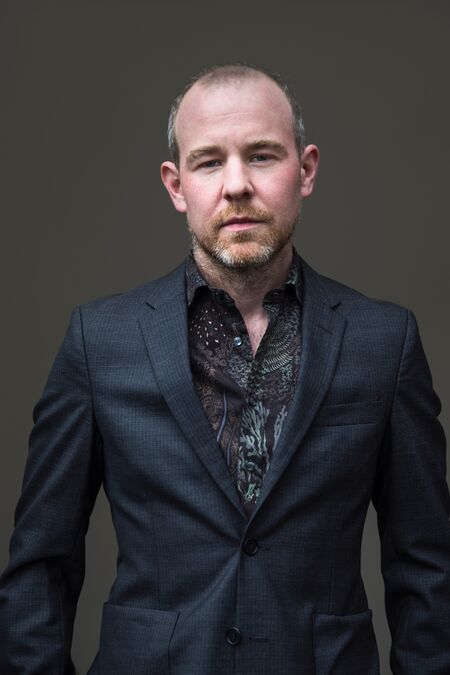

“I have seen many exhibitions that do not shy away from complex issues and at the same time remain accessible to a wider audience,” said Dr. Raphael Gygax. “I wish this could be a trend, in dealing with collections, with temporary exhibitions—fewer works but communicating them better.” In other words, a conscious embrace of “less is more.”
In terms of exhibitions, he is looking forward to the forthcoming exhibition “A Model,” on view this February at Mudam in Luxembourg, which “questions the role of the museum at the beginning of the 21st century,” he explained. Other shows he’s eager to see including Shana Moulton’s show and performance at MoMA; Kiki Kogelnik’s retrospective at the Kunsthaus Zürich; the Venice Biennale, including Adriano Pedrosa’s exhibition and Jeffrey Gibson’s pavilion; the Whitney Biennial, which “is always for me an important exhibition and research platform,” he said; and Amy Sillman’s exhibition at the Kunstmuseum Bern.
“I’m looking forward to the exhibition projects I’m curating—not to sound too smug,” he added, “but the premiere of Nora Turato’s work for Art on the Mart in Chicago in April will be an experience and the retrospective with transdisciplinary artist/researcher Olga Fröbe-Kapteyn for the Museo Casa Rusca in Locarno in August.”
Alexandra Munroe
Senior Curator at Large, Global Arts, Solomon R. Guggenheim Museum and Foundation
New York

Portrait of Alexandra Munroe by David M. Heald, 2016. Courtesy of the Solomon R. Guggenheim Foundation.
“The theme for 2023 was, ‘How can we imagine and produce a way to exist amidst the obsolescence and fracturing of everything we thought we knew, including the certainty of earth’s survival?” said Alexandra Munroe. The two defining trends of last year, she explained, were “First Nations art and AI-generated technologies.” These “seemingly discordant” subjects “share what Agnieska Kurant calls, ‘work that is about the collective unconscious, is about what is possible of what we don’t know.’”
This will continue in 2024, for example in Venice, where “the United Republic of Tanzania will have its first national pavilion, First Nation artist Archie Moore will represent Australia, and Jeffrey Gibson—whose radically participatory environments combine modernist, Indigenous and Queer histories with punk and rave cultures and the powwow practices his intertribal Native heritage—will take over the U.S. pavilion, the first for an Indigenous American artist,” Munroe added.
“Two biennials curated by great colleagues of mine are top of my list in 2024,” she continued. The first is the Diriyah Biennial in Riyadh, led by artistic director Ute Meta Bauer, which “features 92 artists from 43 countries, including 30 artists from the Gulf, making it one of the largest presentations of art from the region.” The second is the 24th Biennale of Sydney, led by artistic directors Cosmin Costinaș and Inti Guerrero. “With typical contrarian brilliance, they challenge our mass indoctrination by doom-scrollers to incite a different kind of revolution: hope, joy, and resilience in the makings of celebration.”
Rodrigo Moura
Chief Curator, El Museo del Barrio
New York
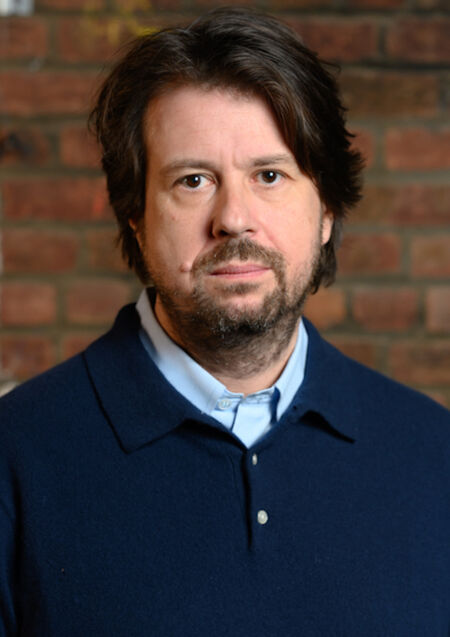
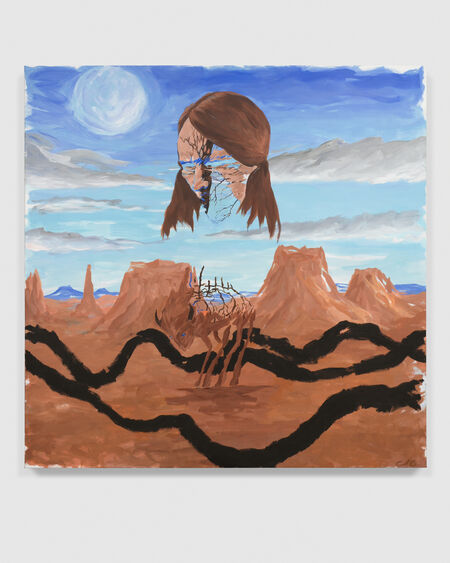
“I am interested in how notions of place and landscape appear in the work of artists like Karyn Olivier and Esteban Cabeza de Baca, as in my opinion a special attention to place will be much-needed to navigate the political landscape of 2024,” said Rodrigo Moura. “Cabeza de Baca’s densely layered canvases are informed by his experience with the U.S.-Mexico border, with plein air explorations and references to the activist history of the region that relate to his biography. In Olivier’s sculptural practice, an interest in collective memories and the re-construction of monuments can be seen in the way she articulates apparently disparate savaged objects and urban materials, making us conscious of our uncertain condition as city dwellers.”
Danielle Bennett
Head of Collections Management and Associate Director for Institutional Planning, Smithsonian National Museum of Asian Art
Washington, D.C.
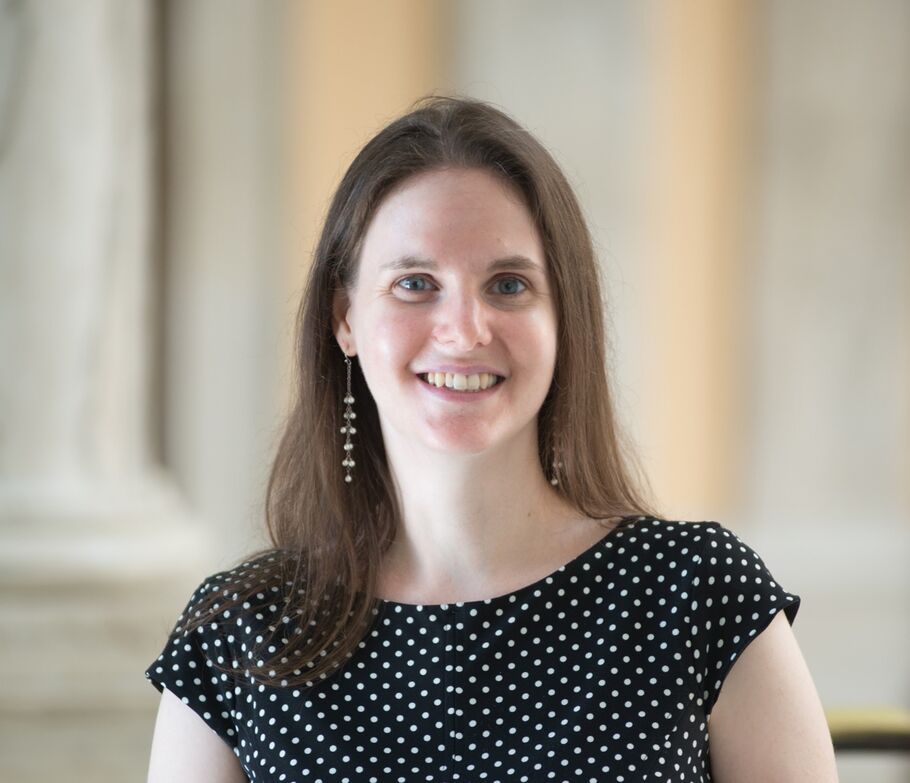
Portrait of Danielle Bennett. Courtesy of Danielle Bennett.
In 2024, Danielle Bennett predicts museums will become more focused on provenance research and community engagement. “I expect that we will see museums asking more questions beyond the walls of their institution including engaging communities of origin to incorporate their voices in galleries and exhibitions,” she said.
“The National Museum of Asian Art plays an important leadership role in provenance research at the Smithsonian and internationally, but despite having some of the field’s leading researchers, there is always room to grow and continue to engage more deeply and frequently with communities of origin,” she added. “We’re at a point of transformation in the field where collaboration is here to stay and will continue to be an exciting area of future growth.”
Tiffany Lambert
Curator and Interim Director, Japan Society
New York
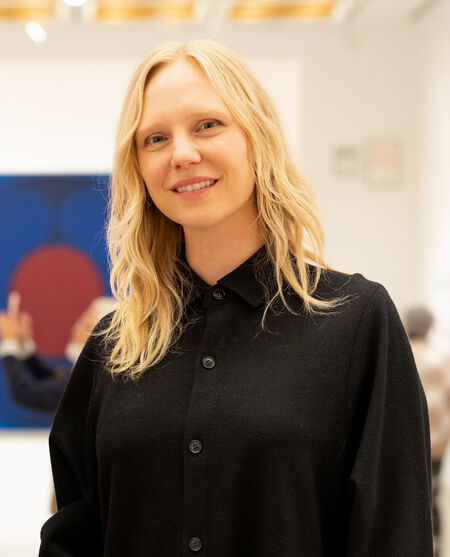

“In 2024, we’re going to see ever more vital exhibitions that reckon with periods of erasure and artists’ work that has, until now, been unheeded even as it revises our thinking of mainstream movements like Minimalism and Conceptualism,” said Tiffany Lambert. “We’ll also continue to see important risk-taking by contemporary artists, especially artists whose work is boundary-defying (e.g. multi-sensorial, intersectional, sculptural installation, and live performance) and work that is community-engaged.”
Katherine Jentleson
Merrie and Dan Boone Curator of Folk and Self-Taught Art, High Museum of Art
Atlanta
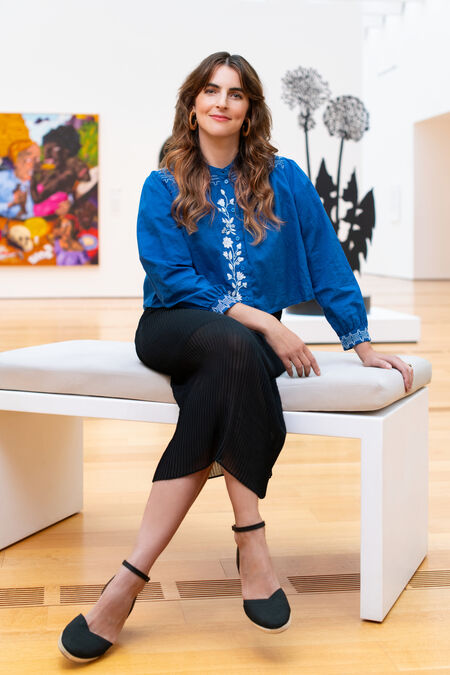
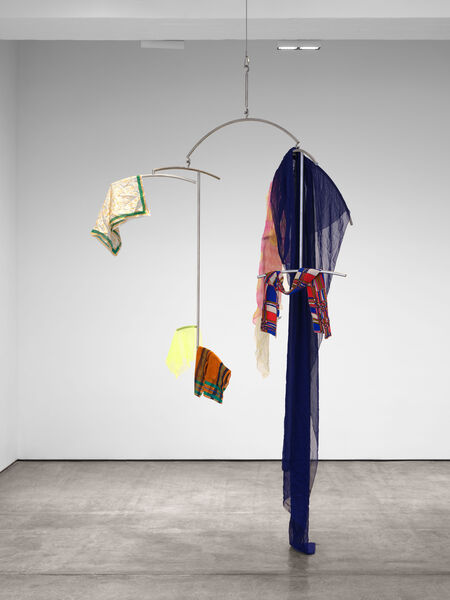
“The impulse toward textile practices is so strong in contemporary art right now and will continue to flourish in 2024 and beyond,” observed Katherine Jentleson. “Though a revival of textile-infused practices is present among artists from many backgrounds, it is especially abundant among Black artists as seen in recent gallery shows of Sanford Biggers (at Monique Meloche), Eric N. Mack (at Paula Cooper Gallery), Chris Meyers (at James Cohan), Bisa Butler (at Jeffrey Deitch), Michael A. Cummings (at Hunter Dunbar Projects), and Dawn Williams Boyd, Myrlande Constant, and Yvonne Wells (all at Fort Gansevoort).”
She also pointed to the prominence of textiles seen through “Legacy Russell’s ‘The New Bend,’ at various Hauser & Wirth locations; the Columbus Museum of Art’s current show, ‘Quilting a Future’; Lynne Cooke’s latest canon-reorienting epic, ‘Woven Histories: Textiles and Modern Abstraction’; and Cecilia Alemani’s women-focused exhibition of the Shah Garg Foundation.”

“There is also a lot happening to amplify Black artists in the parallel and sometimes intersecting ecosystem of quilts proper, a world more reliant on major conventions and festivals than gallery or museum shows, though I predict that these worlds will become increasingly intertwined,” Jentleson continued.
She noted further forthcoming shows that represent these trends: Sonya Clark’s retrospective in Atlanta that will travel to New York,“Patterns in Abstraction: Black Quilts from the High’s Collection” at the High Museum of Art, and “Threaded” at the Spelman College Museum of Fine Art.
Diana Nawi
Independent Curator
Los Angeles
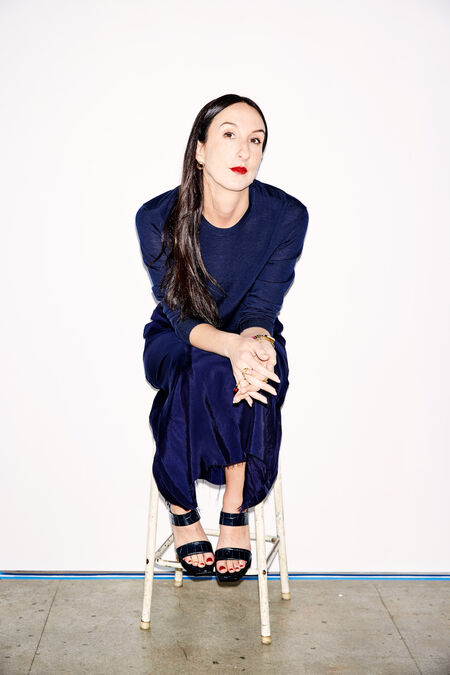

“I’ve been thinking a lot about exhibitions, how we make and experience them,” said Diana Nawi, who was co-curator of Made in L.A. 2023, co-artistic director of “Prospect.5: Yesterday we said tomorrow,” and now serves as a curatorial consultant for Orange Barrel Media. Like several of her peers, she’s eagerly anticipating the Venice Biennale and the Whitney Biennial.
“Adriano Pedrosa has created a program at MASP in which the institution is both a rigorous framework and a site of intellectual and cultural porousness, and a place for experiments in exhibition making,” she said. “I look forward to seeing the way in which this methodology informs the Venice Biennale. Its subject of the foreigner promises to be instructive in this moment.
“Likewise, the Whitney Biennial will bring us not only artworks of interest, but a continued rethinking of exhibition formats and possibilities, and methods of collaboration. Curatorial work will have to continue to evolve new ways of working to meet such a shifting political and social landscape, and I think this will offer some fresh models.
“Personally, I look forward to spending 2024 learning about new artists, especially in Latin America,” she continued. “Artists will always be harbingers of the world to come, and all the more so, those sounding the alarms for the increasingly deteriorating present. As such, imaginations around things like climate change and AI will most likely occupy a fair amount of bandwidth for better or worse. Conversely, I think/I hope we will continue to see artists working in ways which prioritize the politics of individual lives, and to see a commitment to materiality.”
Larry Ossei-Mensah
Independent Curator; Co-Founder, Artnoir
New York
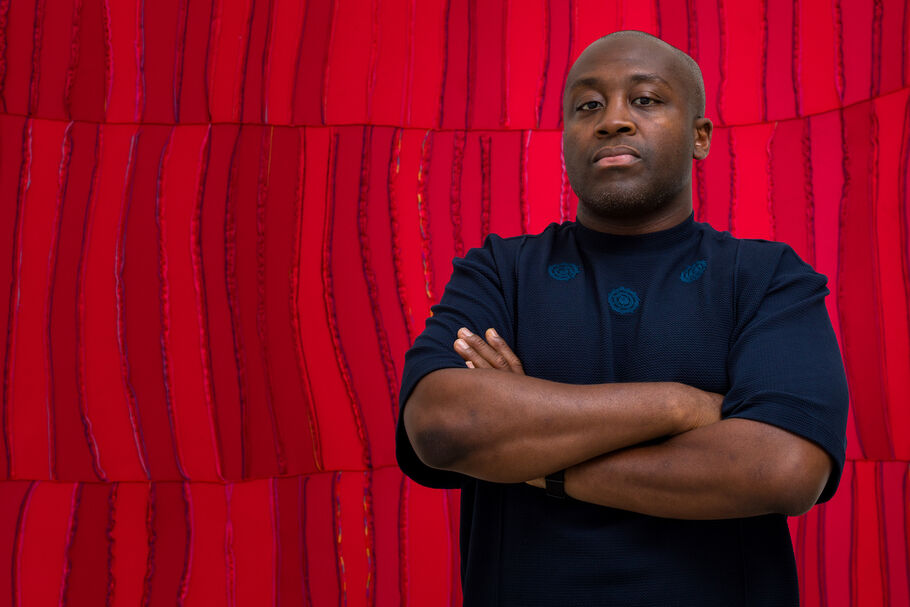
Larry Ossei-Mensah is excited about the growing number of artist-run initiatives across Africa, a movement that’s gaining momentum. “More and more, it’s been exciting to see artists creating spaces for themselves and their communities,” he said. “Artists like Amoako Boafo (dot. atelier), Kaloki Nyamai (Kamene Art Residency), and Ayana V. Jackson (STILL Art Residency) have created residencies that serve as a container for creative expression and artistic development. These projects are building on the efforts of artists like Kehinde Wiley (Black Rock) and Yinka Shonibare (GAS Foundation), who have been developing their initiatives, putting Africa at the center of the discussion over the past several years.”
“I’m excited about the various biennales and triennales happening this year,” Ossei-Mensah continued. “After co-curating the Athens Biennale ‘Eclipse’ in 2021 with Omsk Social Club, I cultivated a newfound respect for the biennale as a platform for discourse and discovery. I’m excited about the Venice Biennale in April, Dakar Biennale in May, and Prospect.6 in November in New Orleans.
“Regarding artists, I’m excited about Alvaro Barrington’s exhibition at Tate Britain in the spring; Lauren Halsey at the Serpentine in the fall; Melissa Joseph and her project at Rockefeller Center launching January/February of this year; and Zanele Muholi at SFMOMA is going to be a game-changing exhibition.”
Mary-Dailey Desmarais
Chief Curator, Montreal Museum of Fine Arts
Montreal
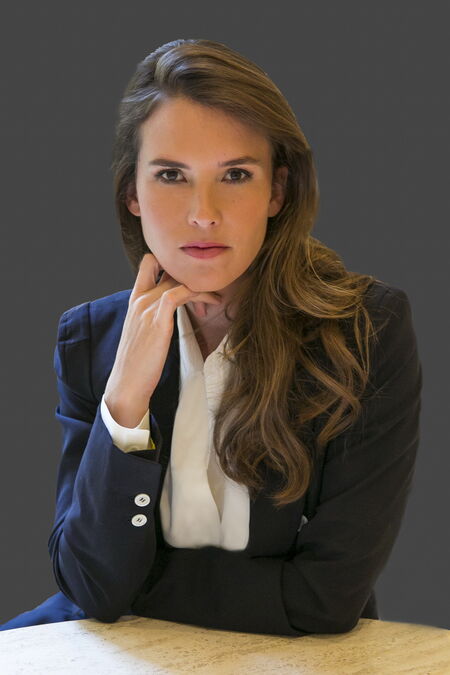

“Among the trends that I find most exciting this year is the steadily growing, overdue, and much-deserved attention to Indigenous artists from and across North America,” said Mary-Dailey Desmarais. She is anticipating several milestone exhibition including two notable firsts at the Venice Biennale, where Choctaw and Cherokee artist Jeffrey Gibson will represent the United States, and Kalaalleq and Greenlandic artist Inuuteq Storch will represent Denmark.
“We are rightfully seeing the spotlight turned firmly toward important work by Indigenous women artists in both the U.S. and Canada, working in a range of media, including painting (Julie Buffalohead, Brenda Draney, Darcie Bernhardt, Jaune Quick-to-See Smith), photography (Dana Claxton, Meryl McMaster, Hannah Claus, Maureen Gruben), and installation (Wendy Red Star, Rebecca Belmore, Tanya Lukin Linklater, Rose B. Simpson, Caroline Monnet, Raven Halfmoon), to name but a few!
“From an institutional standpoint, I am excited to see more exhibition projects on Indigenous arts that are led by members of the artists’ respective communities,” she added, nodding to the Montreal Museum of Fine Arts’s upcoming show “ᐅᐅᒻ ᒪᖁᑎᒃ uummaqutik: essence of life,” curated by asinnajaq (named one of Artsy’s most influential young curators in 2020).
Correction: A previous version of this article listed outdated titles for Erin Christovale and Alexandra Munroe. The text has been corrected to reflect their current roles.
